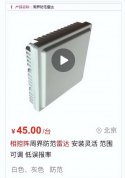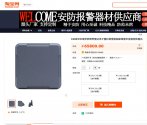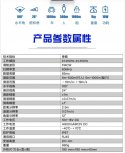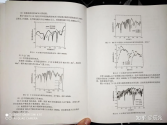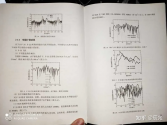This a bit of an apples and oranges comparison. To dissipate an equal amount of heat, an air cooled solution will need more weight in radiators near the antenna, whereas liquid cooling offers much more flexibility in the location of radiating surfaces.
The more important thing is the cooling capacity it provides. There is no "Moral ground" here for "apples and oranges" But rather it's clear..you want power go liquid, you want light and easy, go air cooled. If you need more power for your Air cooled Radar, then pack as many TRM as practical.
However, state of the art AESAs with wide bandwidth, digital beamforming and more sensitive receivers can easily have superior performance over older analog AESAs from the early 21st century, especially once environmental factors like jamming are brought into the picture.
Define bandwidth as you will have several types of bandwidth here :
1.Your operational antenna bandwidth or fractional bandwidth which refers to the frequency that you operates in.
2.Your receiver bandwidth, which based on your emitted pulsewidth and also depend on what target you are trying to engage.
The #1 is defined in your operational regime. and for current AESA Which still relies on Phase shifters it is about equivalent of your beamwidth and limited by beam squint phenomenon. We have no real "True time delay" AESA yet and this is 21st century.
#2 Cannot be changed arbitrarily, if you do calculation on MDS (Minimum Detectable Signal) You will notice "smaller" receiver bandwidth lead to "more sensitive" receiver but as you find out, too small of a value indicating an inoperative receiver. While "larger" bandwidth lead to "less sensitive" receiver.
Related to DBF is that i wonder if any fighter aircraft radar already operate such DBF ? AFAIK Only Japan so far experimenting with it.
Maybe it is the "real thing" once the real practical and cost effective means of Element level DBF become available. RIght now however we are living in your so called "Analog" AESA.
As for sensitivity well. Define sensitivity too as Loop gain which previously you have difficulty in accepting as a real proper metric to define sensitivity and also scales up with increase in TR count as seen in US SPY-6 Radar... you still not understand eh why the "dB" figure increase as soon as you add more module.
For jamming however It is beyond the scope of My modeling and RRE as some jammers does not really attack the capability of a radar to determine range. One thing however is that the AESA does not seem AFAIK to offer new technique. Other than Adaptive nulling which can help deals with noise jammer. While others like leading edge tracking to counter VGPO and RGPO can be implemented in other radars.
Also for angle tracking, what AESA you think do angle tracking with other methods than Monopulse ? Current Radars are using Monopulse angle tracking method, particularly Amplitude Comparison. There are others namely Phase Comparison but this is rarely used in fighter or ship or any Radars other than niche application like counter battery and to some extent ABM Radar.
Monopulse itself are vulnerable to Cross Eye jamming which still the most effective, Cross Pol and Image frequency jamming are also available but Cross Eye would be the hardest to counter. What you think AESA might offers in countering that technique ?

